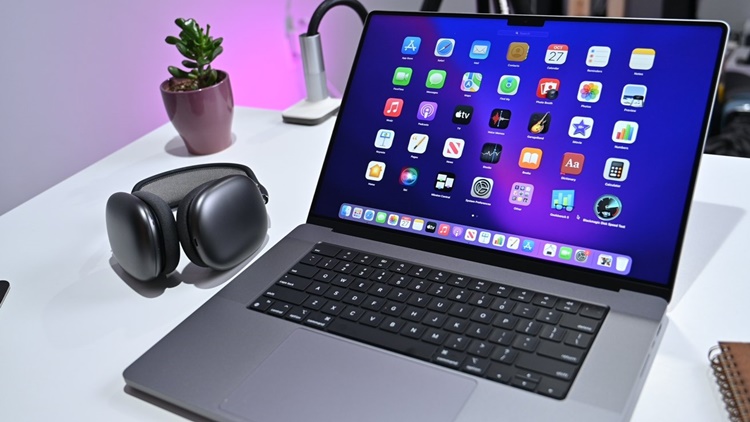A Detailed Review Of The Apple MacBook Pro 16 (2021) Laptop
APPLE MACBOOK PRO (2021) – Here is a thorough and detailed evaluation of the Framework Laptop (2021), highlighting its positive aspects as well as its drawbacks.
The Apple MacBook Pro 16 (2021) is a high-end laptop powered by Apple’s M1 Pro and M1 Max SoCs (System on a Chip). It retains the same 16-inch screen size as its predecessor, the 2019 Intel-based Apple MacBook Pro 16. However, this newer version boasts a Mini LED backlight and the ability to dynamically increase the refresh rate to 120Hz for smoother visuals. The display is impressively sharp, maintains accurate color representation, and achieves sufficient brightness for an authentic HDR experience.
The keyboard provides a comfortable typing experience, the touchpad is generously sized and responsive, and the webcam offers outstanding video quality with well-exposed and detailed images for video calls. It offers a wide range of ports, including a full-size HDMI port, USB-Cs with Thunderbolt 4 support, and an SD card reader. The M1 Max SoC effortlessly handles various workloads, and thanks to its energy efficiency, the laptop delivers an impressive battery life of up to 15 hours during light productivity tasks. However, when it comes to demanding games, the performance can be inconsistent due to the limited optimization for its ARM-based SoC. Additionally, the display’s response time is relatively slow, resulting in noticeable motion blur behind fast-moving objects.

The Apple MacBook Pro is a top-notch choice for a workstation. Its M1 Max SoC is more than capable of handling a wide range of tasks, including resource-intensive activities like video editing and 3D rendering. It remains cool and relatively quiet even under heavy workloads and doesn’t experience significant throttling over time. The laptop offers ample connectivity options, including a full-size HDMI port, USB-Cs with Thunderbolt 4 support, and an SD card reader, although you may still need adapters for USB-A peripherals. One drawback is that post-purchase memory and storage upgrades are not possible, as the battery is the only user-replaceable component.
PROS
- Excellent port selection includes full-size HDMI and Thunderbolt 4 ports.
- The screen displays accurate colors and supports a wide color gamut.
- SoC can handle demanding workloads like video editing and gaming.
- Fast storage drive.
- Minimal performance loss over time.
CONS
- No USB-A ports for wired peripherals.
Differences Between Sizes And Variants
| Screen | 16.2″ IPS 3456 x 2234 120Hz (Liquid Retina XDR display with ProMotion) |
| CPU | M1 Pro (8 performance cores, 2 efficiency cores, 200GB/s memory bandwidth)M1 Max (8 performance cores, 2 efficiency cores, 400GB/s memory bandwidth) |
| GPU | M1 Pro (integrated, 16 cores)M1 Max (integrated, 24 cores)M1 Max (integrated, 32 cores) |
| Memory | 16GB LP-DDR5 6400MHz unified memory (M1 Pro only)32GB LP-DDR5 6400MHz unified memory64GB LP-DDR5 6400MHz unified memory (M1 Max only) |
| Storage | 512GB PCIe NVMe SSD1TB PCIe NVMe SSD2TB PCIe NVMe SSD4TB PCIe NVMe SSD8TB PCIe NVMe SSD |
| Color | Space Gray Silver |
Please like and follow/subscribe:
Philnews YouTube Channel
Philnews.ph FB Page
